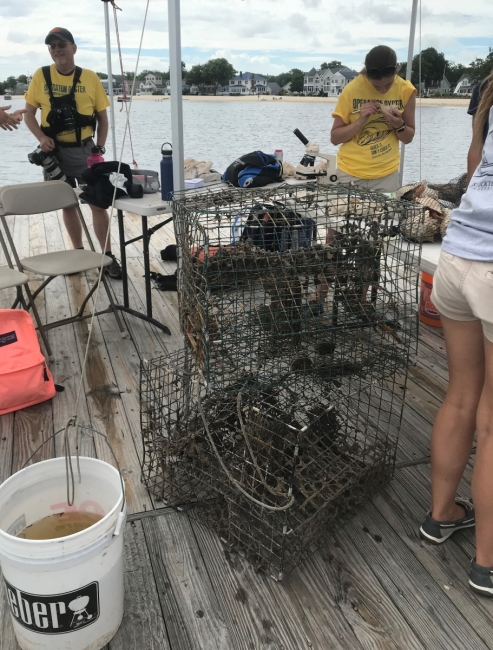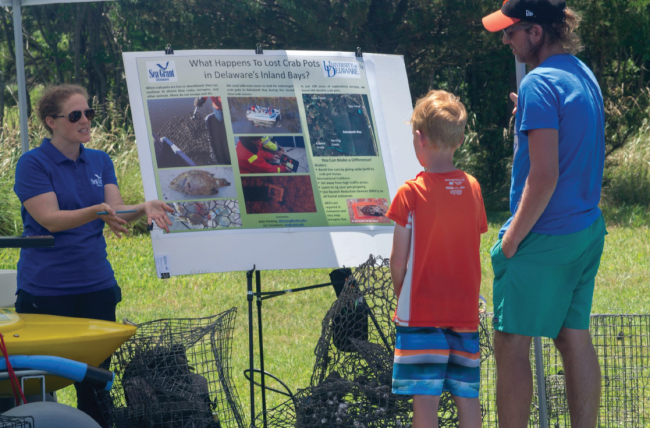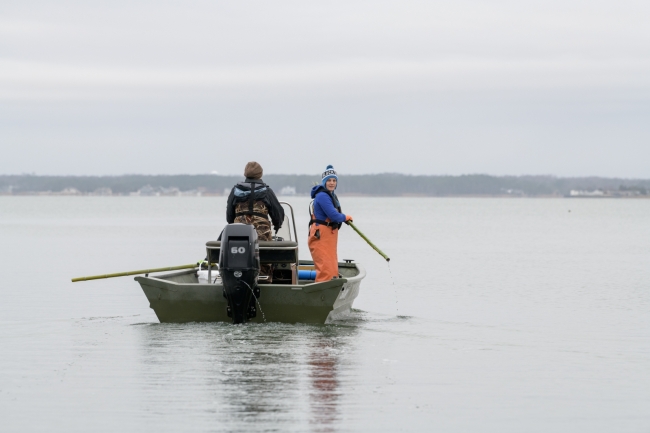The NOAA Marine Debris Program’s Mid-Atlantic region spans the states of Delaware, Maryland, New Jersey, New York, and Virginia, as well as the District of Columbia, and is home to the largest estuary in the United States, the Chesapeake Bay. Fishing and crabbing are prominent commercial and recreational activities across the region, where many livelihoods depend on healthy populations of crabs, lobster, sea scallops, and a variety of other high-value species. In the Chesapeake Bay alone, the blue crab fishery accounts for 50% of the United States blue crab harvest, and is worth about $80 million annually.
Unfortunately, derelict fishing gear and lost crab pots can threaten these important resources by continuing to capture and kill wildlife, damage sensitive habitats, and even compete with and damage active fishing gear. Our partners in the Mid-Atlantic are taking on the problem by removing derelict fishing gear, working with commercial fishers and communities to prevent gear loss, and creating new technologies to identify and share the location of lost crab pots.
Building off the successes and lessons learned from a past project with the NOAA Marine Debris Program, the Conserve Wildlife Foundation of New Jersey (CWJ) partnered with local crabbers and Stockton University on a new project to retrieve derelict pots, resulting in 947 pots being removed from Barnegat Bay. The organization also partnered with high school students from the Marine Academy of Technology and Environmental Sciences to collect and analyze data on the annual cycle of crab pot loss in New Jersey crab fisheries and the impacts of abandoned and derelict gear on different non-target species that may be trapped, including the diamondback terrapin. The project included over 450 hours of student data collection and analysis and as a result, the CWJ designed and distributed informational postcards to help reduce future gear loss by educating the public at festivals, local marinas, and through an exhibit on derelict fishing gear.
Blue crabs are a popular catch in Delaware and may be dramatically impacted by derelict fishing gear and lost "ghost" crab pots. The Delaware Department of Natural Resources and Environmental Control, Delaware Coastal Program (DNREC) is working with community members to protect blue crab populations and natural habitats from the impacts of lost crab pots in Delaware Bay and Delaware Inland Bays. Through a NOAA Marine Debris Program Removal grant, DNREC is leading a project that focuses on identification and removal methods for derelict commercial crab pots in the bay. DNREC is collaborating with the University of Delaware, Delaware Sea Grant, and other stakeholders to not only remove hundreds of crab pots in the Delaware Inland Bays, but also to collect information on their location and impacts and educate Delaware’s recreational crabbers and boaters on the best removal techniques for long-term stewardship.
Fishing for Energy, a partnership between the NOAA Marine Debris Program, the National Fish and Wildlife Foundation, and Covanta Energy is supporting two new projects to prevent and reduce the impacts of derelict fishing gear on the marine environment. In the Chesapeake Bay, the College of William and Mary’s Virginia Institute of Marine Science, is working with the community, students, and local watermen to create a marine debris mobile application specifically designed to help anyone record the location, date, and status of derelict crab traps, which can be used to help inform and prioritize removal efforts. Across the Long Island Sound, Cornell Cooperative Extension of Suffolk County is aiming to remove over 3,000 derelict lobster pots using a specialized grapple system to decrease ghost fishing impacts to the depleted Southern New England lobster stock.
Stay tuned later this week to learn about our new removal project with New York City Parks and Recreation to address large-scale marine debris in New York’s Jamaica Bay. Visit the Marine Debris Program’s Mid-Atlantic regional webpage for more marine debris removal, prevention, and research projects taking place in the Mid-Atlantic, and throughout the country.





Excellent work by all the partners!